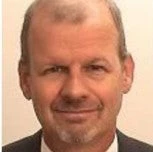
I recently visited Dadaab, Kenya’s third-largest and fastest-growing city, having grown from 250,000 residents a few years ago to more than 400,000 today.
Dadaab is not an ordinary Kenyan city. Most of its residents are not Kenyans, but Somalis, living in a collection of refugee camps crowding the small Kenyan town that existed 20 years ago.
The camps’ earliest residents sought refuge from the fighting that has made Somalia a failed state. The 1,000+ refugees that are now arriving every day are seeking refuge from climate change, the region’s worst drought in 60 years, and the famine that it brings.
I met a group of refugees at a reception center at Dagahaley camp. They had left everything in Somalia and walked hundreds of kilometers across a dry and unforgiving landscape in a desperate gamble to find food, water and refuge in Kenya. The very young and the very old were in terrible condition. Some had already been in Dadaab for a week, living off the kindness of others, too tired to sort out their status. Now they waited patiently to be registered and to receive their initial food ration.
Looking around the camp, I could see their likely future. Refugees who had arrived earlier were cooking, sitting, or talking around water points, or in the low white UNHCR tents that were now “home”. Still earlier arrivals, also squatting outside the formal camps, were building makeshift shelters, digging pit latrines, collecting firewood, or planting dry branches to fence their meager possessions. The earliest arrivals were the most settled—living in tin-roofed houses and fenced compounds that were formally allotted, not far from the main street of kiosks, shops, and community and administration buildings that gave each camp the look of a small town.
The Ifo, Dagahaley and Hagadera camps were full—overflowing—and the government had not yet opened Ifo extension or Kambioos, though Ifo extension had roads, water towers, and administrative buildings already in place. Recognizing the scale of the problem, the government opened Ifo extension a week later and pledged to open Kambioos by November. I could see how, in a few years, these camps too would be filled with Somalis, living lives of semi-permanence in “camps” in a foreign country.
As an established group of camps, Dadaab is well-organized and relatively well-provisioned. The number of agencies present is astonishing—UNHCR of course, but also UNICEF, WHO, UNDP, Care, Save the Children, Médecins sans Frontières, Norwegian Refugee Council, Lutheran World Federation, to name a few. People often arrive in dire conditions, but when they arrive, many organizations are available to help meet their basic needs. Even so, the recent flood of new Somali arrivals is overwhelming current capacities, seriously straining the environment, and raising tensions with Kenyan host communities—who are also suffering the impact of the drought, but not receiving the same level of response.
Nobel laureate Amartya Sen once noted that droughts are a natural phenomena, but famines are man-made.
In Kenya today, many are working hard to prevent drought from leading to famine. Some 3.5 million people living in the country’s arid, poor, and sparsely-populated northeast, where Dadaab is located, are already food-insecure. But the government and its development partners are responding—doubling food distribution, trucking-in water, treating and culling livestock, providing nutritional supplements, and expanding school feeding programs, which is a lifeline to many of the poorest children. These efforts are keeping famine at bay.
By contrast, conflict is impeding assistance in south-central Somalia, where people are already experiencing famine, with the old and young especially hard hit. Some are still strong enough to walk to Dadaab or other refugee camps in Ethiopia. Many are not.
The World Bank is not a humanitarian agency, but we are doing our part. With trust funds, we are providing livelihood support to Somalis living in the epicenter of the drought, helping more Somalis to cope at home. In Kenya, we have increased drought preparedness by establishing early warning systems, improving access to water and livestock feed, and supporting drought-resilient agriculture. Today, we are supporting a rise in cash transfers to vulnerable households and reallocating funds to address emergency needs for essential drugs and drought-mitigation plans and equipment. In addition, to strengthen Kenya’s medium- and long-term response to drought, we are working with the government to enhance social safety nets, safeguard water security in specified water-scare areas, and improve agricultural productivity and irrigation techniques to help farmers adapt to climate change. The best response to drought is usually made before the crisis begins.
Visiting Dadaab, I was reminded of the Sudanese refugees who left Ethiopia in the early 1990s, after the Mengistu regime fell, and walked 1,000 km across their homeland into northwestern Kenya. In the early days of the Lokichokio and Kakuma camps, organization was haphazard; water and food supplies were precarious; and shelters were whimsical at best. Masses of children and young adults had passed from refugees to IDPs to refugees in one hungry, grueling, confusing and frightening year—harassed where they sought refuge, bombarded at home. I will never forget the despair and hopelessness in their eyes, as they faced an uncertain and unpromising future.
Some, I hope, were lucky enough to witness the birth of their new nation, South Sudan, on July 9. I hope that they have now regained a future and rebuilt their lives.
Perhaps these new Somali refugees in Dadaab will one day be able to make their way home to a more prosperous future in their own country as well.


Join the Conversation